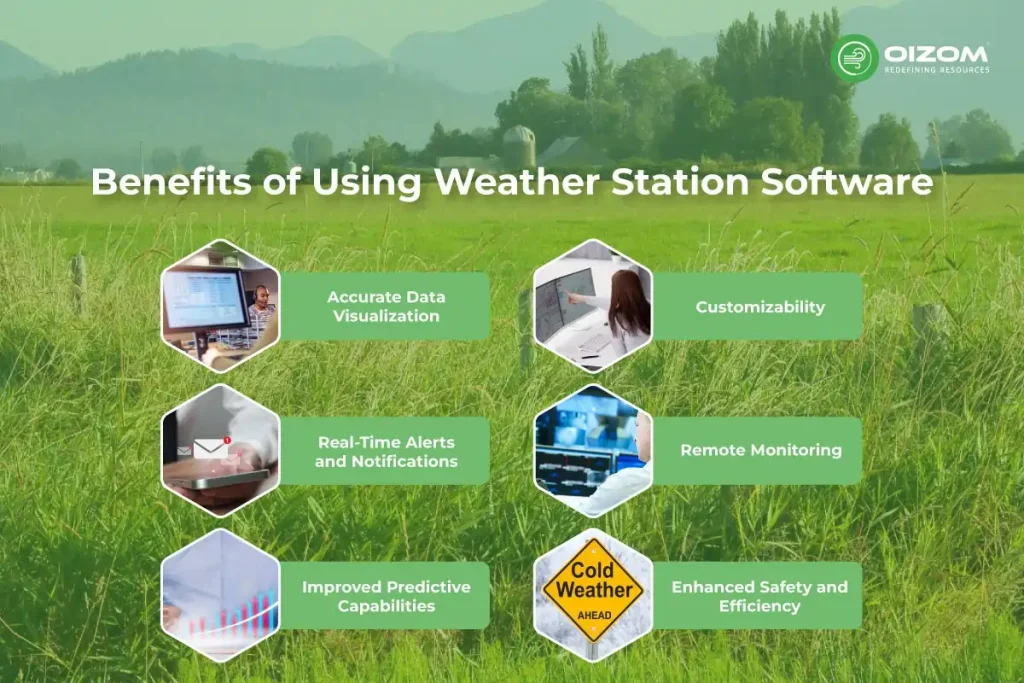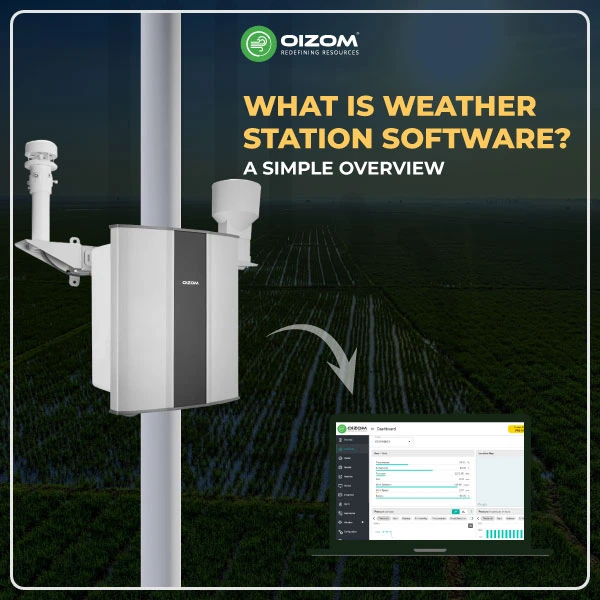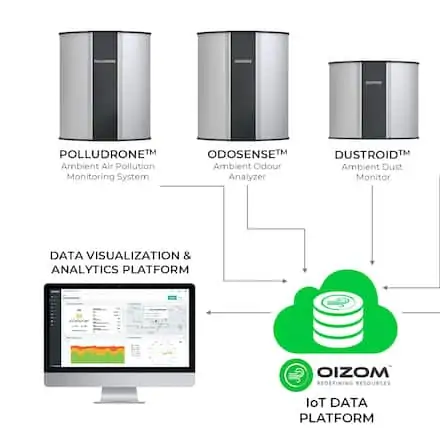10 Key Takeaway Points:
- Weather Monitoring Simplified: Weather station software transforms raw data from sensors into user-friendly insights like charts, alerts, and forecasts.
- Versatile Applications: It serves industries like agriculture, construction, and environmental research, along with weather trackers.
- Easy Setup: The software is simple to install and configure, and it supports connections via Wi-Fi, GSM, GPRS, and satellite.
- Real-Time Insights: Users can monitor live weather data and receive alerts for extreme conditions, ensuring timely decisions.
- Data Customization: Features like historical data tracking, custom alerts, and integration with cloud or third-party services make it highly adaptable.
- Advanced Predictive Capabilities: Analyzing data improves forecasting accuracy for better planning and decision-making.
- Remote Access: Cloud integration allows users to monitor weather conditions from anywhere across multiple locations.
- Enhanced Safety and Efficiency: The software supports safety protocols and optimizes weather-dependent tasks.
- Visual Data Representation: Clear graphs and charts make understanding trends and patterns effortless.
- Automation and Alerts: Real-time notifications via SMS or email help users stay ahead of sudden weather changes.
What Is Weather Station Software? A Simple Overview.
Weather station software is the brain behind modern weather monitoring systems. Whether you’re a researcher, a farmer, or just a weather enthusiast, this software transforms raw weather data into meaningful insights. Think of it as the translator between sensors and your screen; it gathers data from weather stations, processes it, and presents it in user-friendly formats like charts, alerts, and forecasts.
But it’s not just about checking the temperature or rainfall. Weather station software enables real-time monitoring, data analysis, and even automation for industries that depend on weather conditions. From predicting storms to optimizing irrigation, it’s a powerful tool that makes weather data actionable and accessible.
In this blog, we’ll explore how weather station software works, its key features, and why it’s essential for accurate weather tracking and decision-making. Ready to uncover how the weather station software works? Let’s get started!
How to Set Up and Use Weather Station Software
Setting up and using weather station software is easier than you might think. Start by installing the software provided with your weather station. Follow the installation instructions carefully; most programs guide you step-by-step. Once installed, connect your weather station to your computer or device. This could be via USB, Wi-Fi, or Bluetooth, depending on your system.
Next, configure the settings. Input your location, preferred units (Celsius or Fahrenheit), and any other details the software needs. Once set up, the software will start collecting and displaying weather data in real-time. You can monitor temperature, humidity, wind speed, and more through graphs, charts, or even alerts.
To get the most out of it, explore features like historical data logger and forecast reports. Envizom from Oizom, an advanced air monitoring software for professionals, provides 24-hour weather forecasts, ensuring users can stay informed without worrying about future uncertainties. It also allows integration with apps or cloud services, making weather data accessible anywhere. With these simple steps, you’re ready to track the weather like a pro!
Finally, read and follow the manufacturer’s complete installation and operation manuals before setting up the weather station and its software. This assures proper installation and accurate and dependable weather data.
How Does Weather Station Software Work?
Weather station software transforms environmental data into actionable insights. It collects real-time data from sensors measuring parameters like temperature, humidity, wind speed, rainfall, and air pressure. This data is then transmitted to the software via communication protocols such as Wi-Fi, GSM, or LoRaWAN.
Once received, the software processes and analyzes the data using advanced algorithms to ensure accuracy. It then presents the information on user-friendly dashboards with clear graphs, charts, and reports. Many platforms also provide customizable alerts for extreme weather, helping users take timely action.
Modern weather station software often integrates with cloud platforms, enabling remote access to data from any device and supporting monitoring across multiple locations. Additionally, it can connect with third-party systems or APIs, making it adaptable for applications like agriculture, construction, and environmental research.
In short, weather station software simplifies complex data into meaningful insights, making it a critical tool for industries and individuals to monitor and respond to environmental changes effectively.
Functionalities of Weather Station Software
Weather station software offers a range of helpful features, including:
- Data Collection: Gathers information from devices like rain gauges, thermometers, barometers, anemometers, and other relevant sensors.
- Data Processing: Analyzes and summarizes the collected weather data for easy interpretation.
- Data Transmission: Sends the processed data to a central system or mapping computer for further use.
- Real-Time Data Display: This lets users view live weather data and charts on computers, mobile apps, or other devices.
- Historical Data Access: Allows users to look up past weather data to track patterns and trends over time.
- Weather Forecasting and Warnings: Provides data to meteorological agencies, helping them create accurate forecasts and issue weather warnings.
- Weather Mapping: Creates visual displays of weather patterns, temperature changes, and other conditions.
- Alerts: Sends notifications via SMS or email when specific weather conditions, like storms or high winds, are detected.
Benefits of Using Weather Station Software

There are various benefits of using weather station software, which are discussed below:
Accurate Data Visualization
Weather station software provides clear and easy-to-understand visual representations of weather data. With graphs, charts, and detailed dashboards, it simplifies complex information, enabling users to quickly grasp trends and make informed decisions.
Real-Time Alerts and Notifications
Stay ahead of sudden weather changes with real-time alerts. The software notifies users of critical conditions, such as storms or extreme temperatures, via SMS, email, or app notifications. This ensures timely action to mitigate risks.
Improved Predictive Capabilities
By analyzing collected weather data, the software enhances forecasting accuracy. This improved predictability benefits industries like agriculture, construction, and logistics, where understanding weather trends is essential for planning and decision-making.
Customizability
Modern weather station software can be tailored to meet specific needs. Users can configure alerts, adjust data display formats, and integrate the software with other tools or APIs, making it versatile across various applications.
Remote Monitoring
With cloud integration, weather station software allows users to access data from anywhere, whether you are at a remote location. This feature is especially valuable for monitoring multiple locations simultaneously.
Enhanced Safety and Efficiency
By providing timely and accurate weather insights, the software helps organizations improve safety protocols and optimize operations. From protecting workers in extreme conditions to planning weather-sensitive tasks, it enhances overall efficiency.
Conclusion
Weather station software makes understanding and managing weather conditions simple and effective. By collecting, analyzing, and visualizing data in real-time, it provides users with valuable insights into weather patterns. Its customizable features, real-time alerts, and remote access ensure that users can monitor and respond to changing conditions effortlessly.
This software is a reliable tool for various industries, including agriculture, construction, and environmental research, where accurate weather data is crucial for planning and safety. It also benefits individuals who want to stay informed about local weather trends.
With its ability to simplify complex data and provide timely alerts, weather station software helps users make informed decisions, improve safety, and enhance efficiency. Whether for professional or personal use, it’s a smart solution to stay ahead of the weather and adapt to ever-changing environmental conditions.






